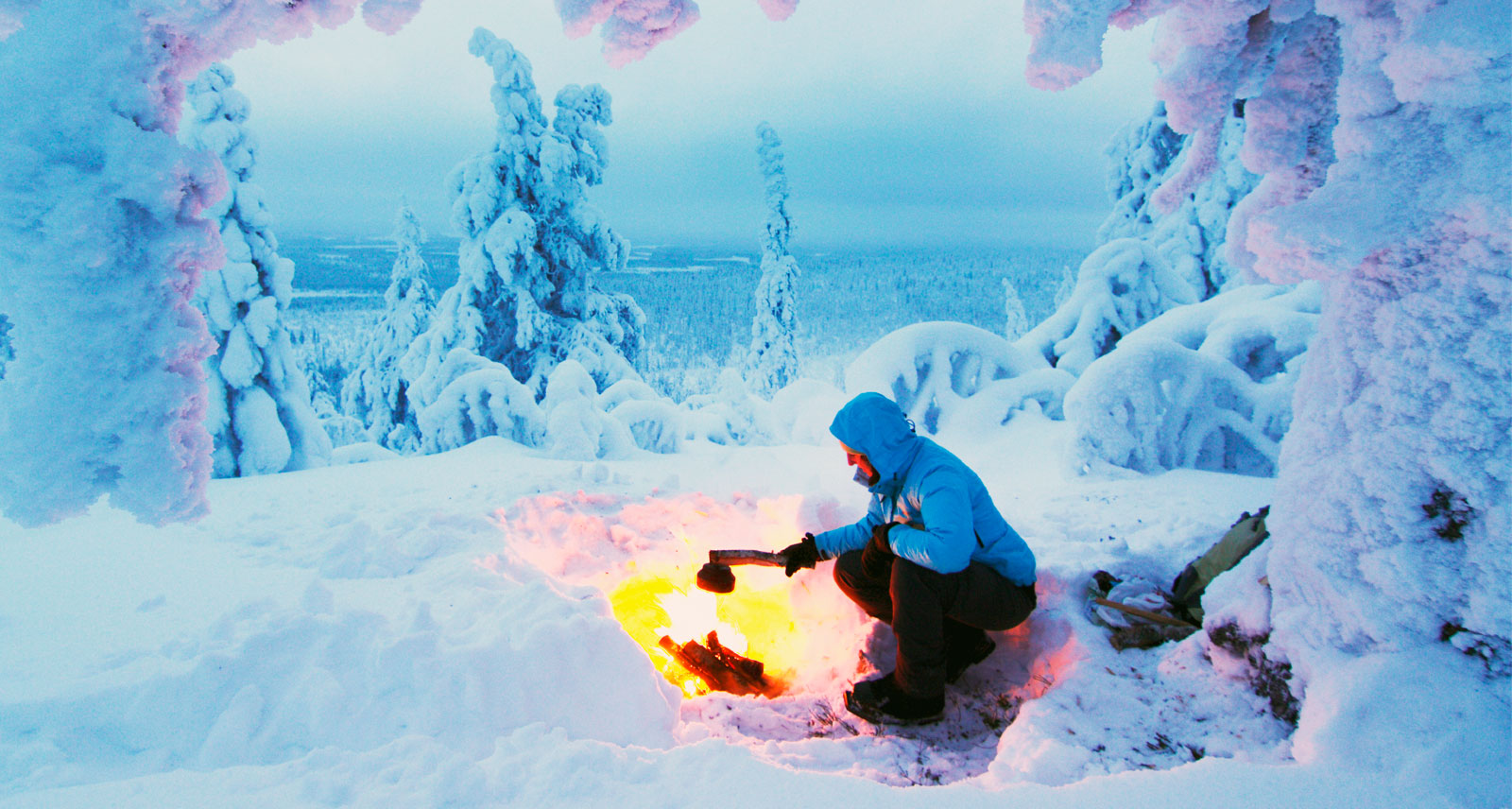How to Build a Fire in the Winter
In basically every culture, the story of how humans discovered fire is enshrined in legend. Greek mythology has it that Prometheus stole fire from the gods. According to the Apache, it was a sly fox that captured it for us. In Hinduism, Agnihotri Brahmans are still keepers of the sacred flame.
Whatever the case, the point is this: fire is, like, stupid important to humans. The ability to build one is what sets us apart from animals, and basically led to our evolution. For ancient man, it provided warmth, protection from wild predators, and a way to cook food. Most importantly, it kept our forbears alive in the unbearable cold. There’s nothing that taps into your primal instincts quite like going full Revenant and spurring some flames in the harshest of climates. If you’ve never built a winter campfire yet, now’s your chance. Yeah, sure it sounds crazy. Crazy awesome.
Make Your Fire Bed
If you’ve already got a built-in fire pit, disregard this part. You’re golden, man. If not, you’ll need to do a little work. Look for a spot that’s protected from the wind. If there’s some snow where you are, shovel it aside so you can light this bad boy on solid ground. If there’s too much snow to clear away, pack it down tightly so you have a nice, hard platform to lay your base of logs on.
Get Wood
This will likely be the most challenging part — unless you’ve already got a convenient stack of logs gathered for your fireplace. (But really, that’s no fun. Did Leo have a convenient stack of logs to work with? Hell to the no.) You can search various areas of the surrounding woods for fallen timber. Look for wood that’s as dry as possible. Even if the wood is covered in light, fluffy snow, it may still be dry enough to burn. According to science, the fluffy shit has less moisture content. You can check to see if a stick is dry enough to burn by snapping it in half and listening for the audible crack of breaking wood.
Light That Mother Up
You’ll need some extra help for this, because even slightly damp wood is can be hard to set aflame. So make sure you bring some fire helpers from your local outdoor store — things like fire starter cubes, fire packets, fire paste, cotton balls soaked in petroleum jelly, or even some drier lint (preferably slathered in petroleum jelly) can be lifesavers when the weather turns wet and cold. Pine needles, pinecones, and bark can also serve as great sources of kindling. Make sure you light the fire from the windward side — that lets the flames travel through your sticks, engulfing them faster. Also, light the fire low; fire climbs as heat rises, so be sure to have your match or lighter touching the material at the base of the fire lay. Don’t bother lighting it at the top; this isn’t a candle, dummy.
Keep the Flame Alive
There is nothing more depressing than watching your flame die out just after it’s begun (figuratively and literally speaking). Surround the fire with any damp logs you haven’t used — the fire’s heat will dry them out and provide an extra stash as the evening goes on. Also be sure to keep a backup wad of tinder (the dry, dead, fluffy stuff, not the shallow dating app) handy, so that when you’re gone, it will still burn on and on and on and on. (But, all Billy Joel references aside, put the fire out once you’re done.)










